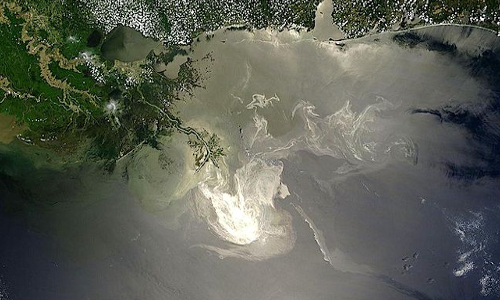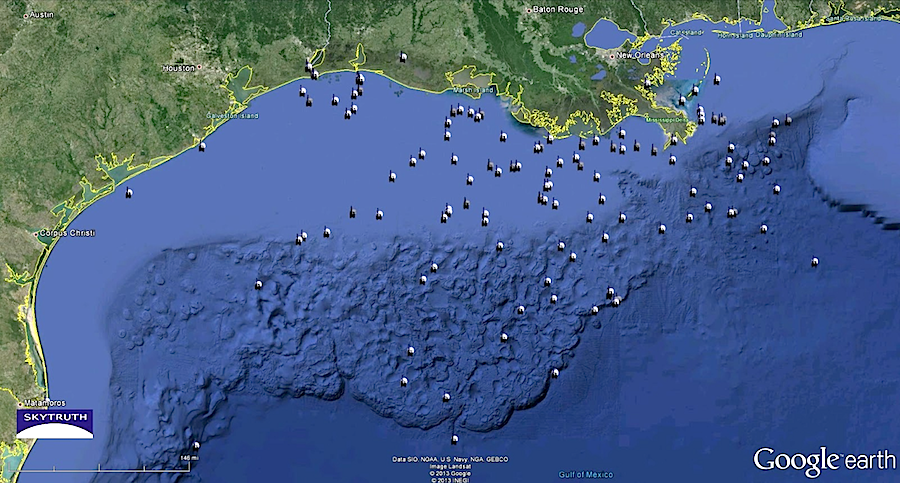
4 Years After Deepwater Horizon Oil Spill, EPA Lifts BP’s Gulf Drilling Ban

Nearly four years after the BP Deepwater Horizon oil and gas disaster in the Gulf of Mexico—an event that blew away the record books for the nation’s worst accidental oil spill—BP is fully back in business, and drilling is booming in the Gulf of Mexico.
Last week the U.S. Environmental Protection Agency lifted the ban that prevented BP from engaging in any contracts with the federal government, paving the way for BP to resume bidding on leases for oil and gas development on public lands and waters, including the Gulf.
BP already holds more than 600 lease blocks—more than any other operator in the Gulf—and they currently have ten rigs working to drill new deepwater wells, like the Macondo well that failed in 2010.
But they’re not the only game in town. There are dozens of other operators working in the Gulf, in deep water and shallow. One of our fans just tipped us off to a nifty dataset that shows just how busy things are offshore here and around the world: the locations of active Mobile Offshore Drilling Units (MODUs). Here’s a look at the MODUs working right now in the Gulf of Mexico:
Not to be confused with the thousands of fixed offshore oil and gas production platforms, MODUs are the rigs that get towed from place to place to drill new wells, and do maintenance operations on existing wells. They range from the relatively small and simple jack-up rigs that work in shallow water, to the huge and complex semisubmersible rigs, like the Deepwater Horizon, that handle the technically challenging deepwater work.
Visit EcoWatch’s ENERGY and OFFSHORE OIL DRILLING page for more related news on this topic.

 233k
233k  41k
41k  Subscribe
Subscribe 


